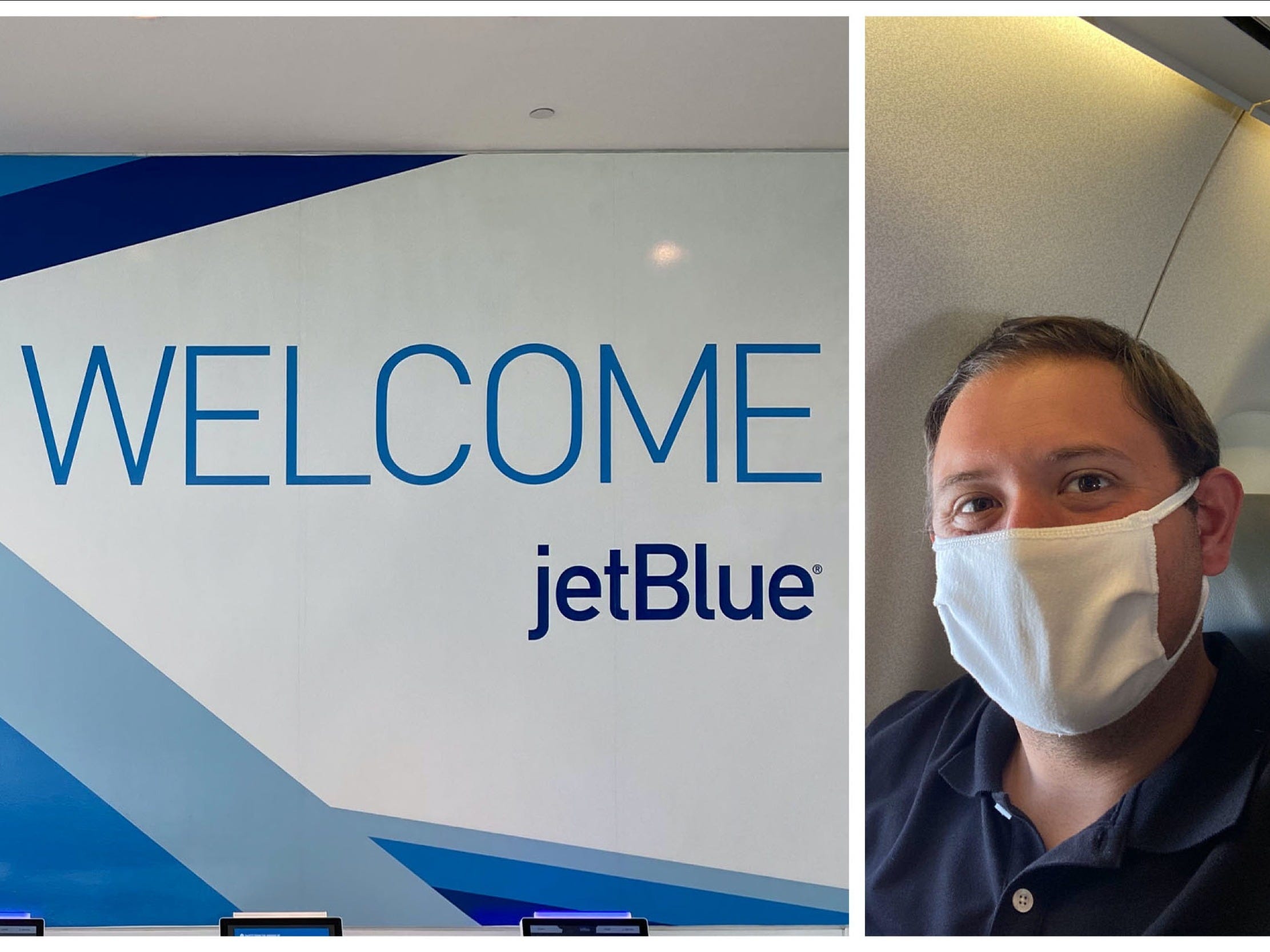- JetBlue Airways is known for its low fares and high frills like complimentary in-flight entertainment and WiFi.
- Like most, the pandemic has forced the airline to adjust. Unlike its low-cost competitors, JetBlue has opted to block seats while keeping its complementary offerings like entertainment and a snack and beverage service.
- I flew on the airline from New York to Chicago and saw how the airline is surpassing competitors when it comes to safety and service but is struggling with scheduling issues.
- Visit Business Insider’s homepage for more stories.
JetBlue Airways has always been an anomaly in US aviation: a low-cost yet high-frills airline that’s become the thorn in the side of the country’s largest carriers.
The New York-based airline has approached low-cost with a passenger-first attitude and free extras such as in-flight entertainment and in-flight WiFi, despite low fares. The pandemic saw JetBlue keep its frills but overhaul its route network, pulling out completely from its long-time West Coast hub in Long Beach, California, and doubling down on the East Coast in cities like Newark, New Jersey.
JetBlue is also blocking seats on its aircraft through the summer, along with Delta, Southwest, and Alaska. Although initially blocking seats only through July 4 weekend, the airline extended its commitment to the practice through October 15, two weeks after the airline stops receiving CARES Act assistance.
But it hasn’t been all smooth sailing for JetBlue as employees at smaller airports were told in June that positions were likely to be outsourced, as Business Insider first reported, and reduced demand is greatly impacting flight schedule.
I flew on the airline from New York to Chicago in early August - with a return on Spirit Airlines - to see how well the carrier is living up to its promises.
Here's what it was like.
JetBlue wasn't off to a great lead in my book when my original flight was canceled with three days' notice and I was left scrambling to rebook. I ultimately departed 24 hours earlier than expected.

I arrived at the airline's Terminal 5 at JFK Airport via the AirTrain. The normally packed connector between the station, short-term parking lot, and terminal was a ghost town.
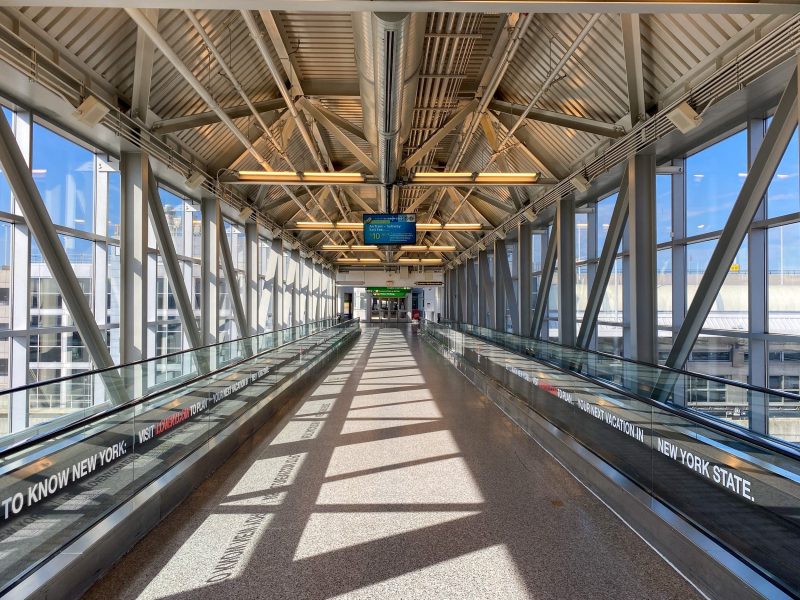
Social distancing was not an issue here as there were simply no people to avoid.
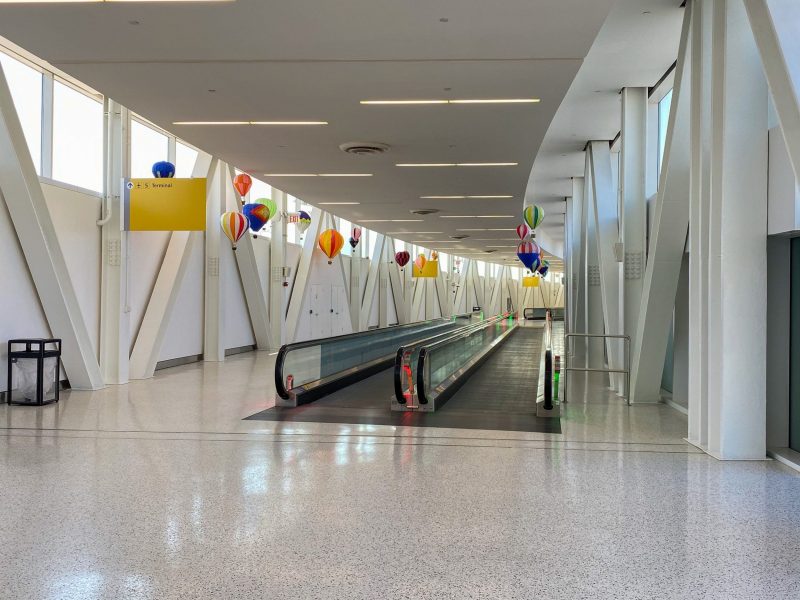
The lonely walk to the terminal ended at the old familiar welcome sign from all the airlines that use Terminal 5, with JetBlue's being at the forefront as the dominant carrier.
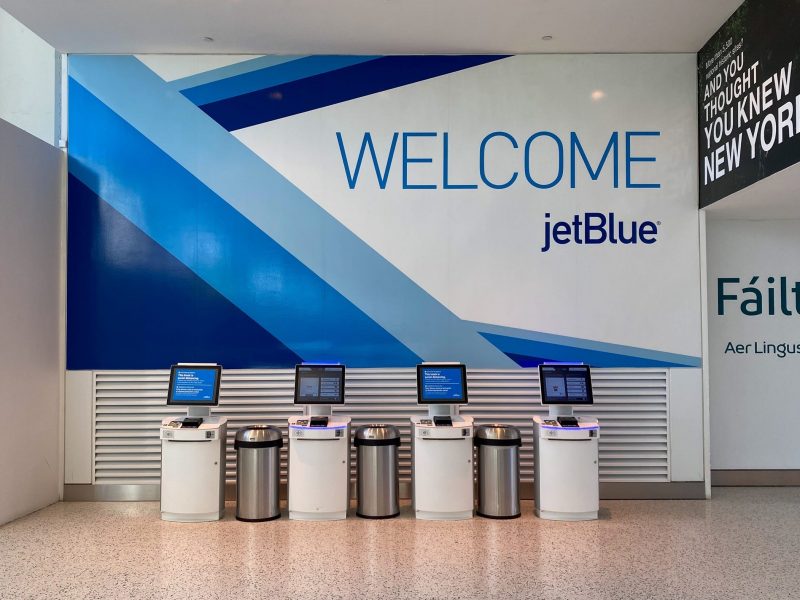
I got my first glimpse here of what to expect from the airline: a mixture of good intentions with poor common sense.

In a row of four kiosks, every other kiosk was blocked instead of keeping the two center kiosks blocked for the most distancing.
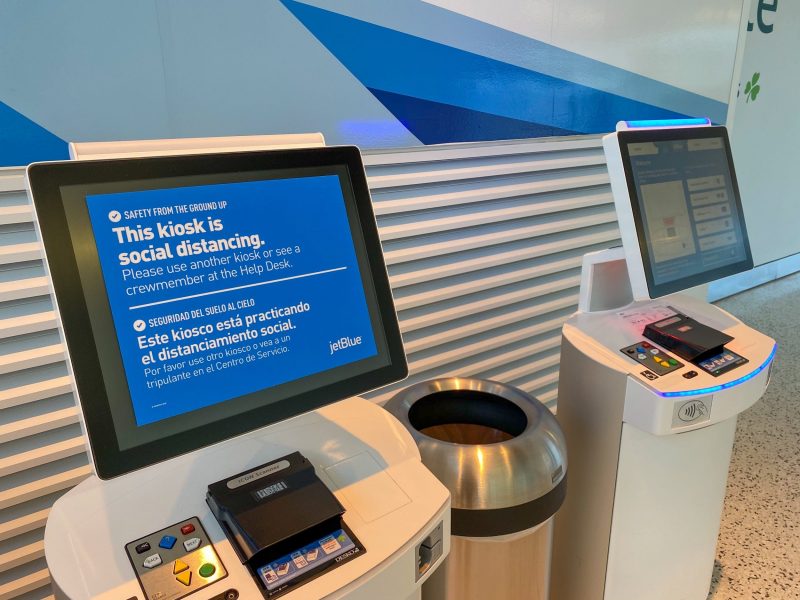
As I went to print my boarding pass, I immediately noticed that the kiosk had been updated with a new welcome screen that offered directions on how to use the mobile app instead of using the kiosk as a way to limit the use of the communal touchscreen.

I continued with the check-in process on the kiosk to see what else was different. Everything was very much the same but I did have to acknowledge a health declaration.
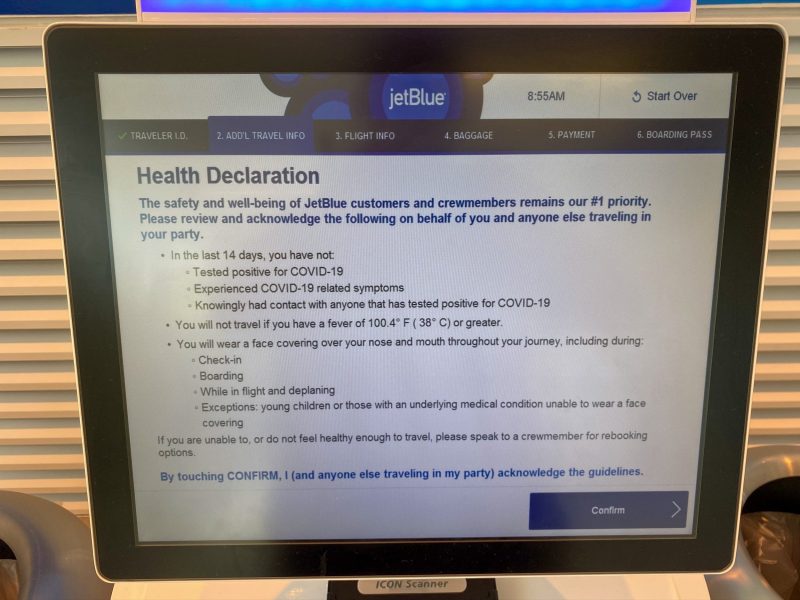
Among others, I had to declare I wasn't positive for COVID-19, didn't have a fever, and would abide by all rules regarding face coverings.

JetBlue being extra cautious did not come as a surprise since the airline was hit early on with a public relations nightmare when a passenger found out he had tested positive while on a flight from New York to Florida in March. He was later banned by the airline.
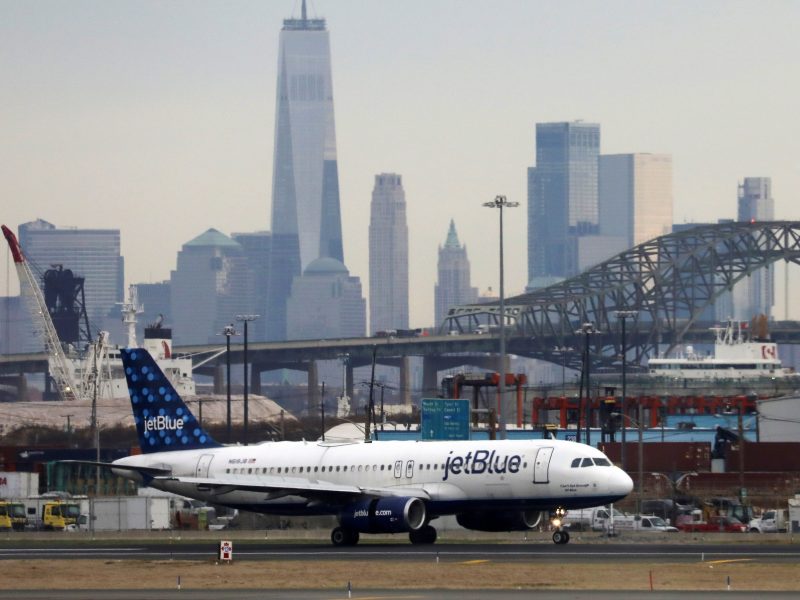
Read More: A JetBlue passenger who flew from New York to Florida has tested positive for coronavirus and JetBlue bans a man who tested for COVID-19 but didn't tell the crew until after flying - and learning he had the disease
Next came seat selection, which proved to be easy since JetBlue was blocking all aisle seats for solo travelers on the Embraer E190 aircraft on which I was flying. I'd have the row to myself wherever I chose to sit.
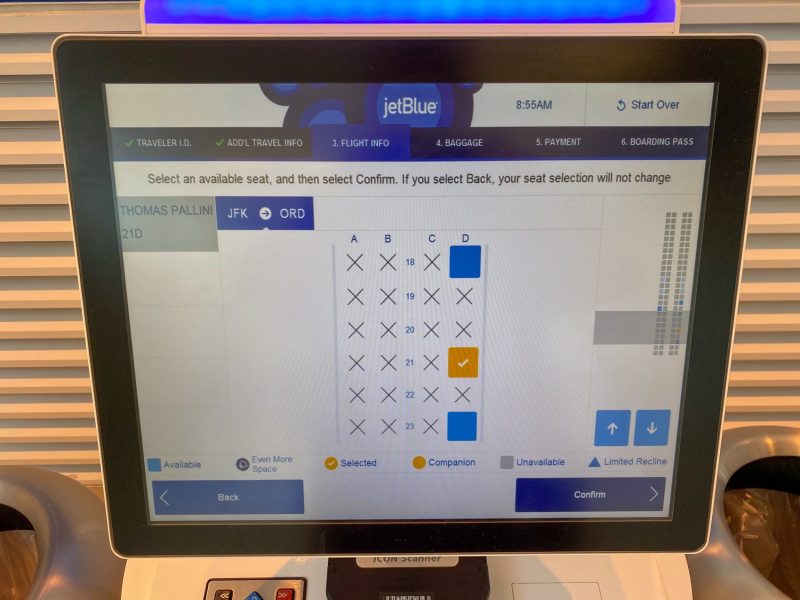
After getting my boarding pass, I headed towards the security checkpoint line and noticed the markedly smaller departure board compared to normal.
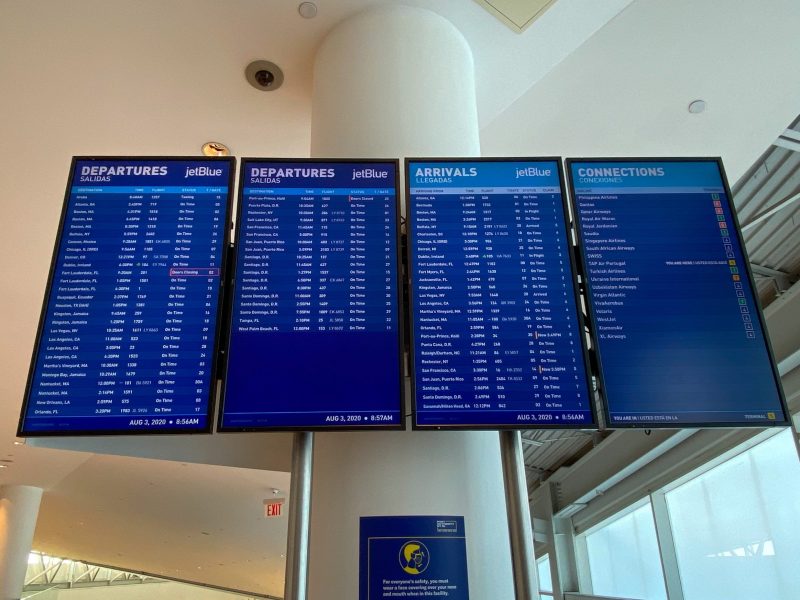
As I experienced on numerous occasions with the airline, JetBlue is cutting their schedule to cut extra fat through measures like leaving only one daily round-trip between New York and non-hubs.
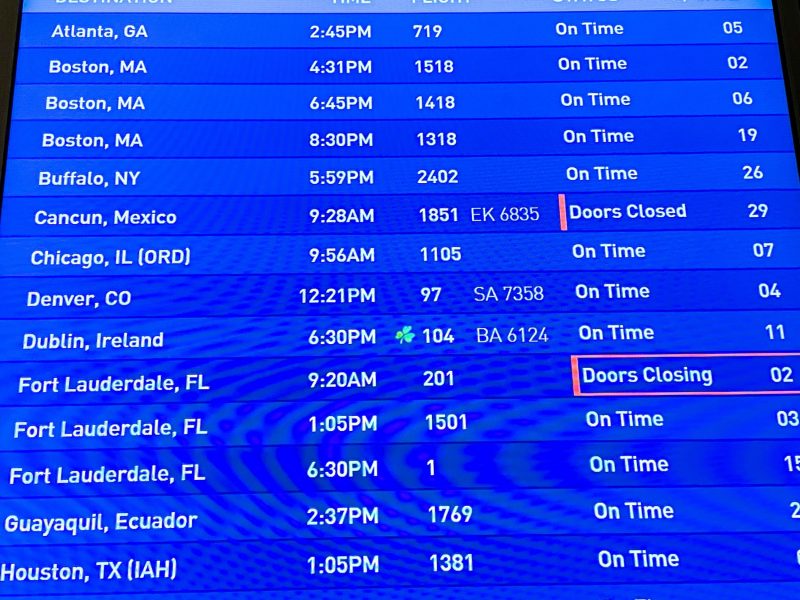
The check-in area of the terminal was reasonably busy but still nowhere near what it should have been for a Monday morning.
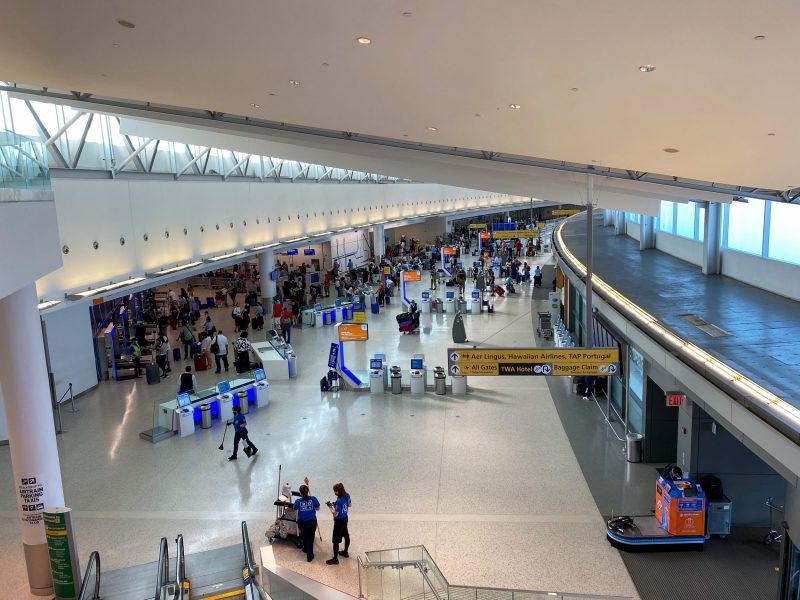
Domestic leisure travel, on which JetBlue thrives, is slated to return faster than international but daily passenger numbers for the day across all US airports failed to surpass 800,000 compared to 2.6 million the same day in 2019.
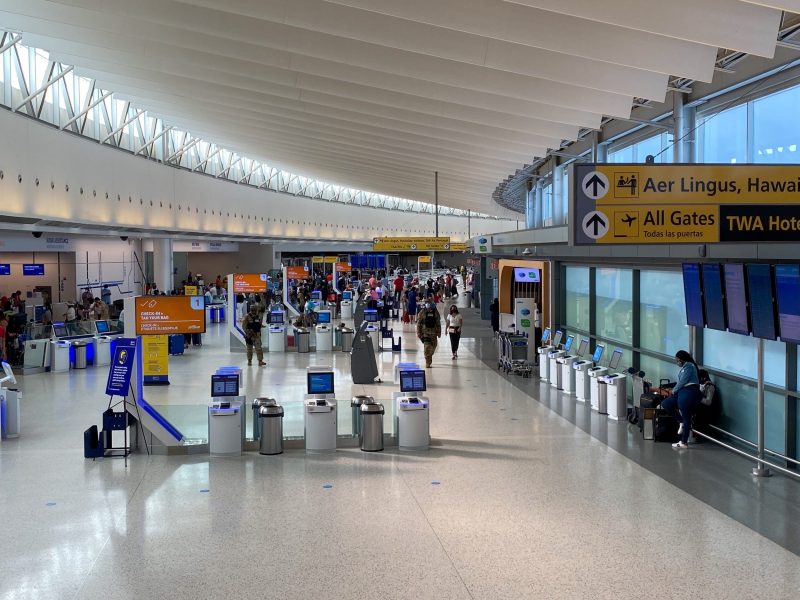
Kiosks had been blocked here as well with the only log jams being at the bag drop, where lines had formed with less than six feet of distancing between travelers.
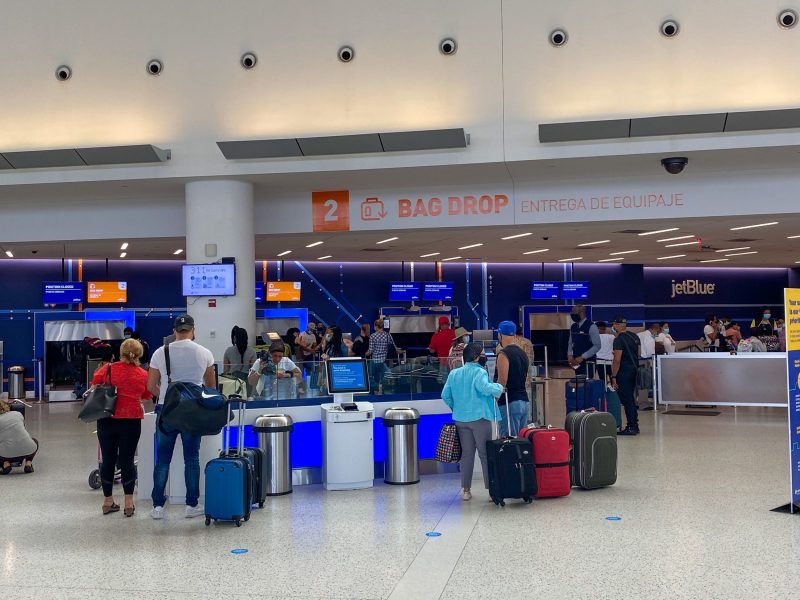
The most frustrating part of the terminal experience was the security screening, and not for the normal reasons.

Instead of having passengers fill the empty rows intended for overflow at the security checkpoint...
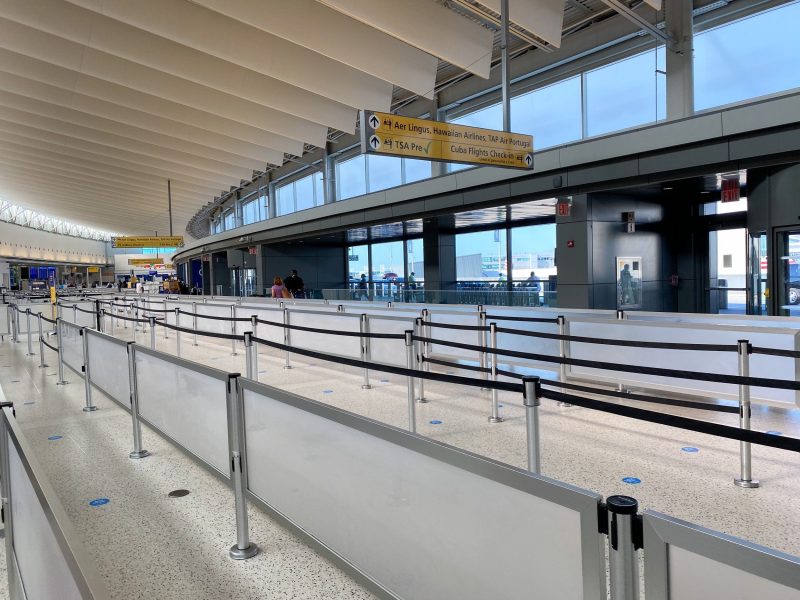
One, smaller line was used for all passengers – regardless of whether they had purchased expedited screening or had TSA PreCheck – that backed up into the terminal.
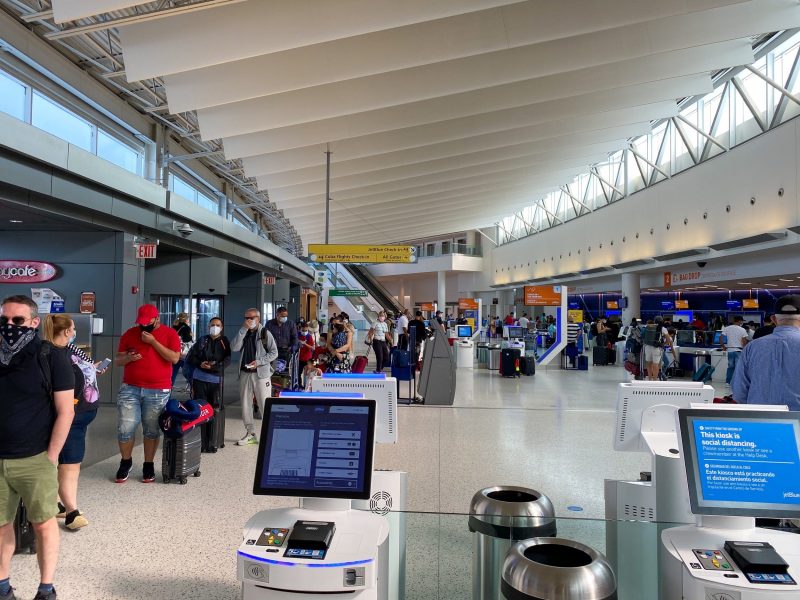
It lacked any common sense and also created confusion for PreCheck members, such as myself, who didn't know where to go because no direction was being given.
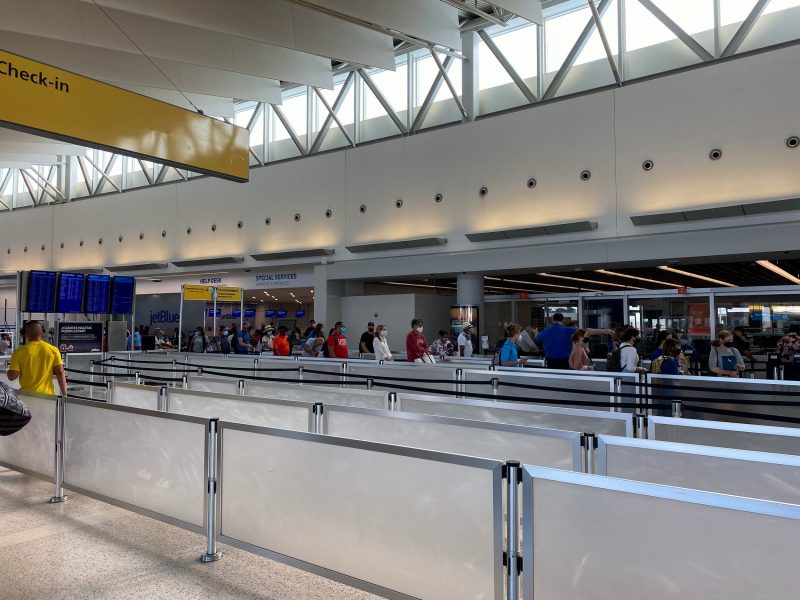
Once on the line, JetBlue-installed floor placards reminded passengers to keep their distance...
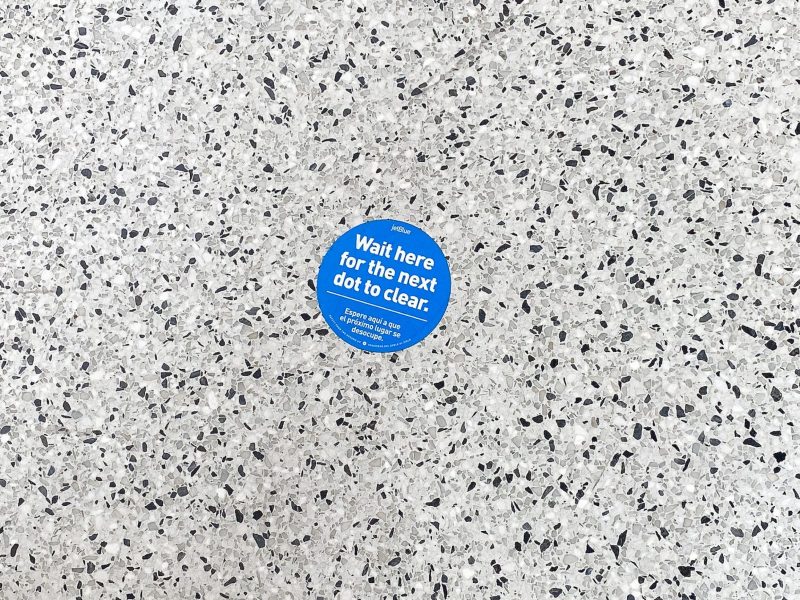
And airport staff strictly enforced the six feet rule, though neither placards nor staff were ensuring distancing in the part of the line that had backed up into the check-in area.

A single piece of social distancing signage from the Port Authority had replaced the thousands of passengers that normally traverse the atrium en route to their gate.

Despite the chaos, the actual screening process took only a few minutes – with agents letting TSA PreCheck members keep their shoes, belts, jackets, etc. on – and I arrived at the Terminal 5 atrium.

Normally popular businesses throughout the terminal were closed, leaving fewer options to grab something before a flight.
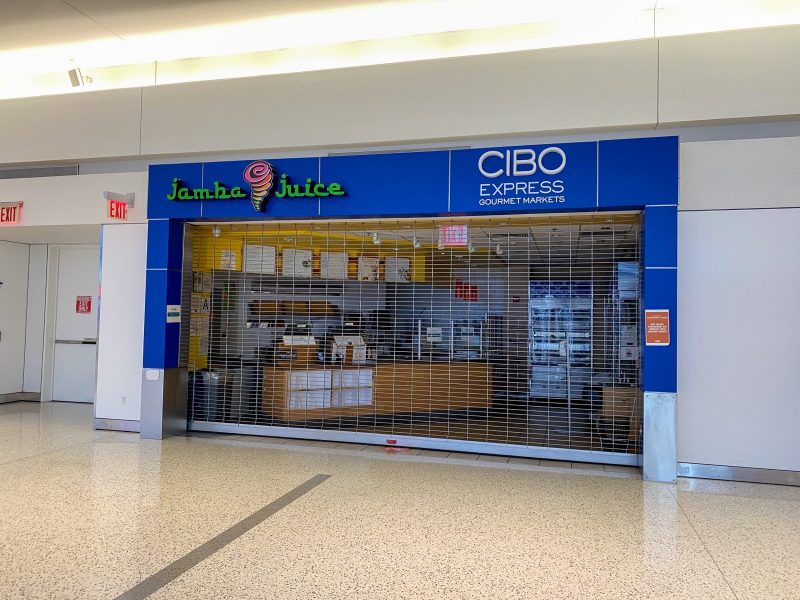
New York has yet to allow indoor dining so some eateries and bars were shut.

Even the food court even had a modified offering.
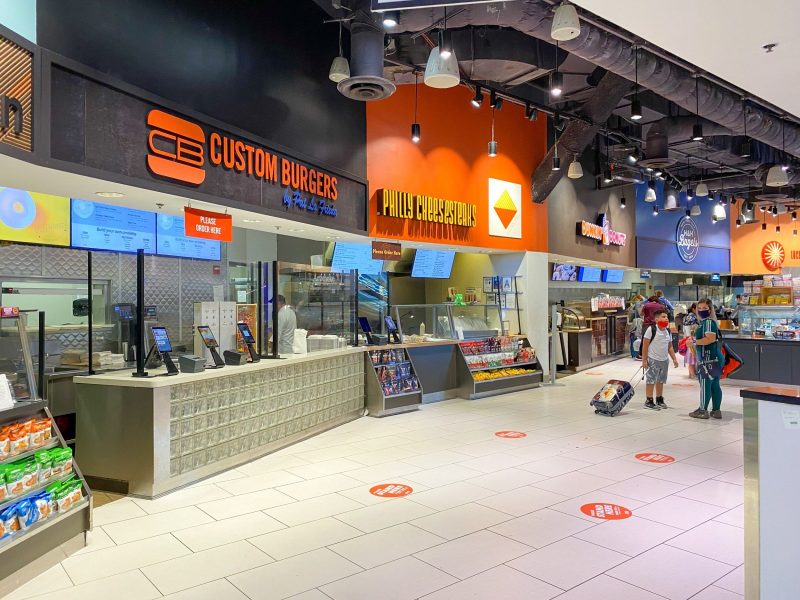
The hot food buffet was replaced with bags of chips and other snacks.
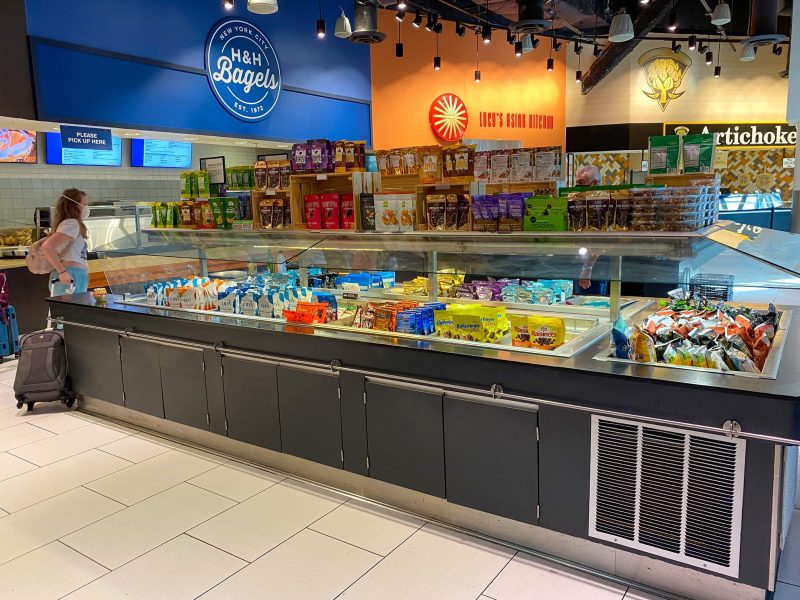
Social distancing reminders in the terminal hallways en route to my gate were rare with this wipe station being the only one I saw during my visit.
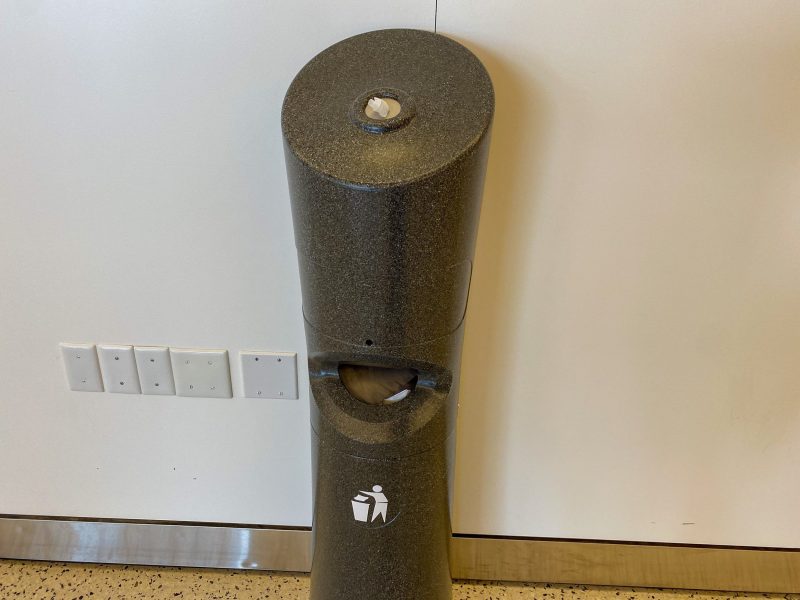
The gate area, however, was impressively retrofitted with new safety measures.
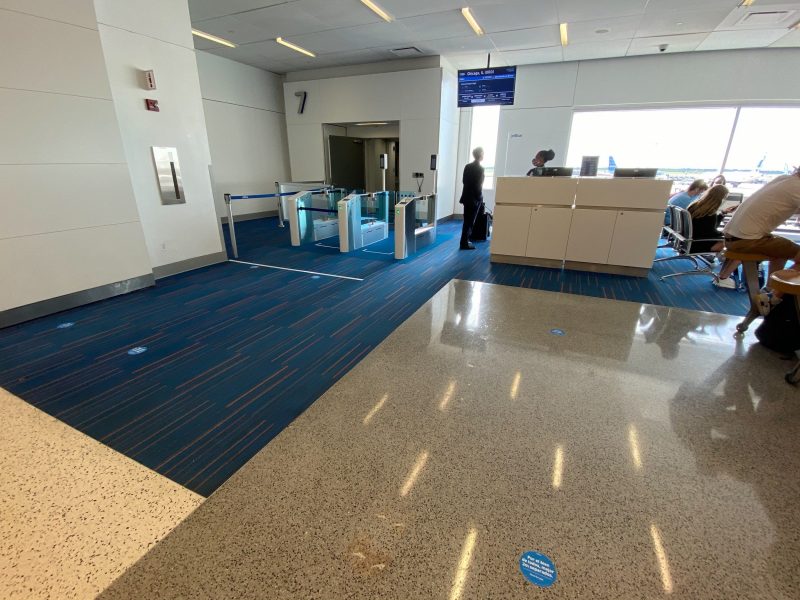
Social distance placards were placed on the floor at the gate and even on chairs throughout the seating area...

Every gate counter had plexiglass partitions to separate agents and passengers.
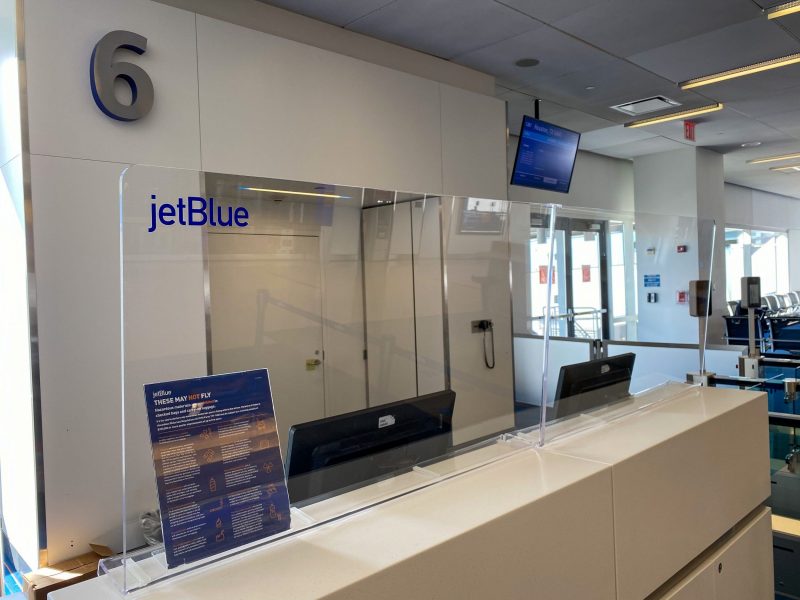
And self-boarding gates had been installed.
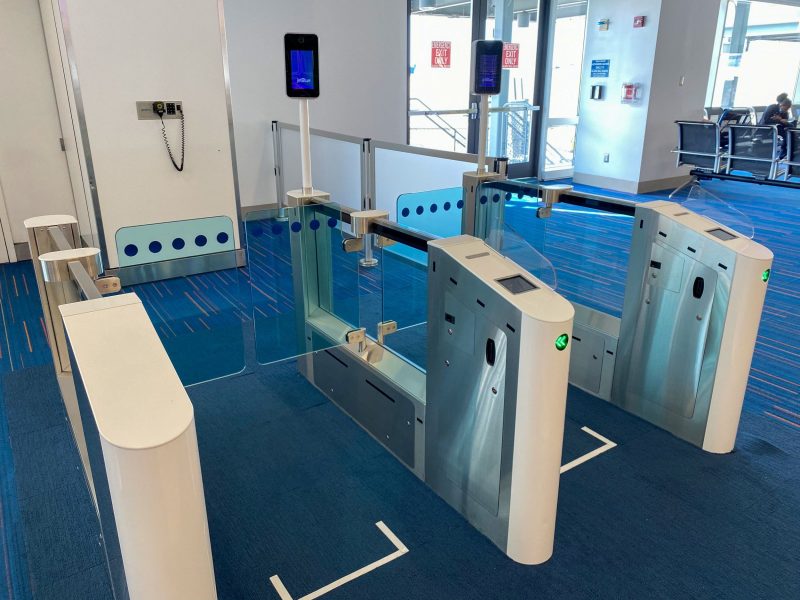
The only area in which JetBlue fell down was the gate signage, which other airlines have been using as a platform to show off their new health and safety practices.
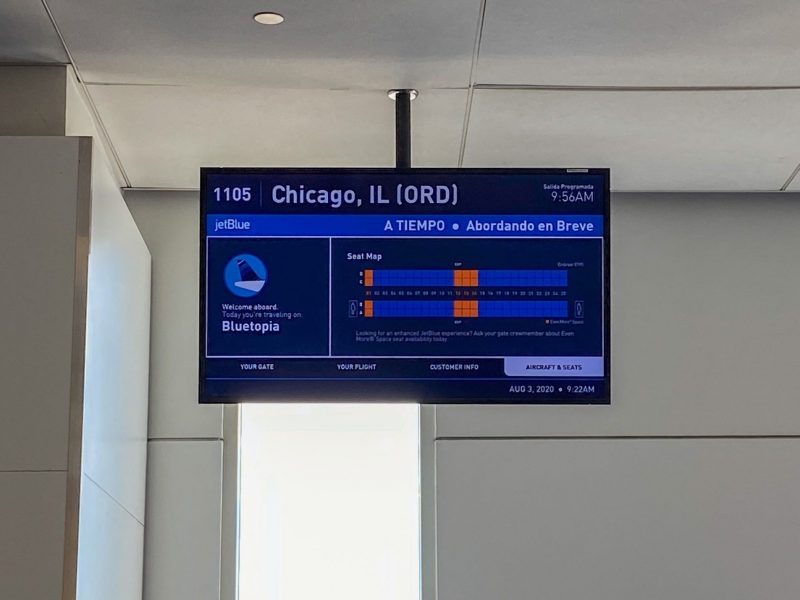
Our aircraft for the two-hour flight to Chicago was the Embraer 190, the smallest in JetBlue's fleet. The larger Airbus A320 typically serves this route.

Boarding was performed back to front with the last five rows boarding first and so on. The self-boarding lanes, however, didn't recognize my boarding pass so I had to visit the gate agent to have it manually scanned.

More placards lined the jetway floor as I walked down to the plane.

There was a brief hold up as the flight attendant finished sanitizing her work area, a good sign that the crew was taking the safety precautions seriously.
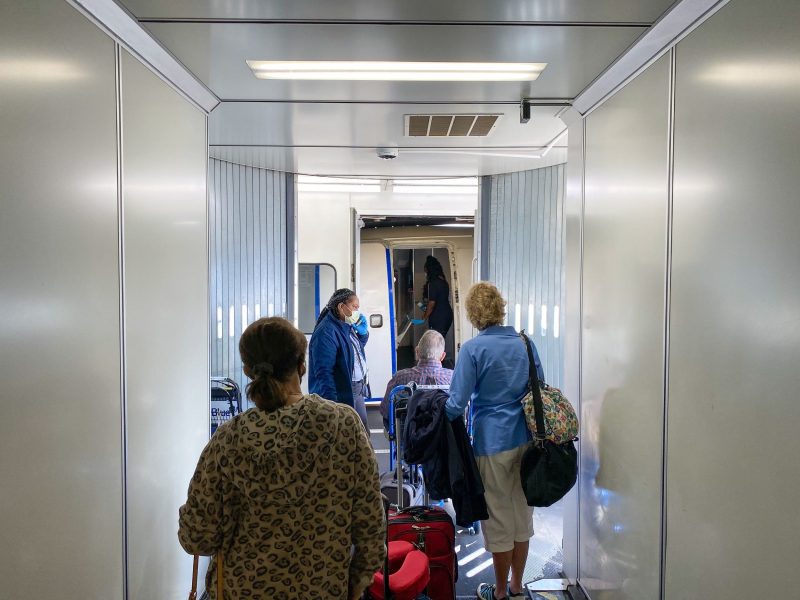
The aircraft's normal capacity of 100 seats was reduced to around 50. The airline would likely have had trouble filling even that if JetBlue hadn't canceled the next day's flight, forcing me and other passengers on this one.
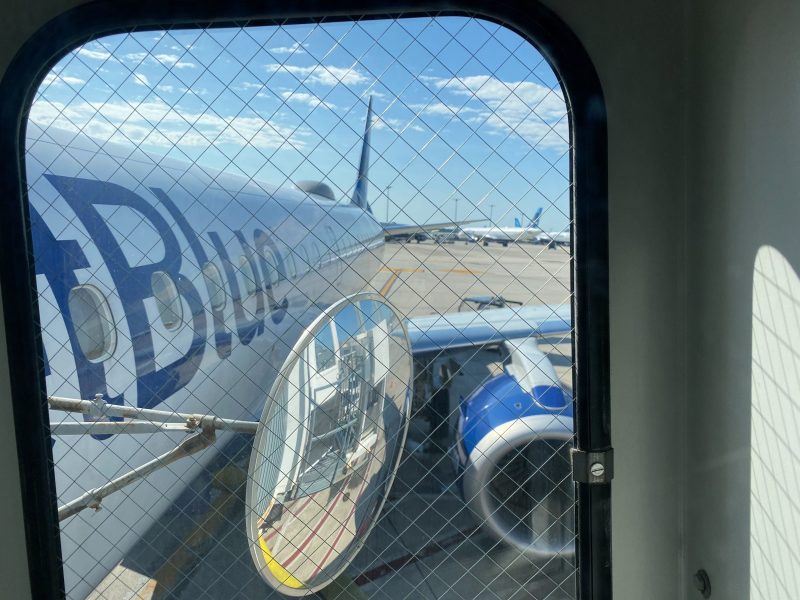
Boarding back to front meant we didn't have to walk through a crowded plane to get to our seat and also meant I made the right call selecting a seat in row 21 instead of 9, as I was originally assigned.
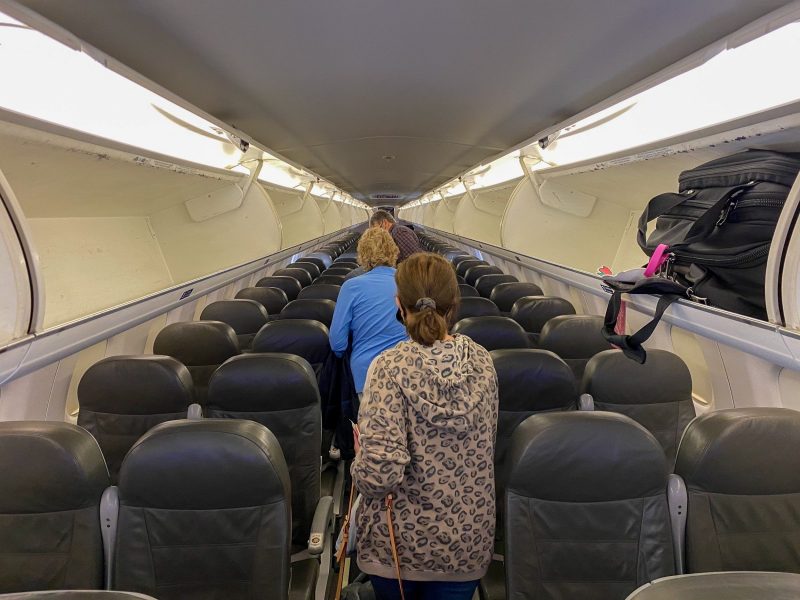
JetBlue's E190s are great for short hops but are incredibly tired-looking. They're on their way out of the fleet to be replaced with the Airbus A220 soon.
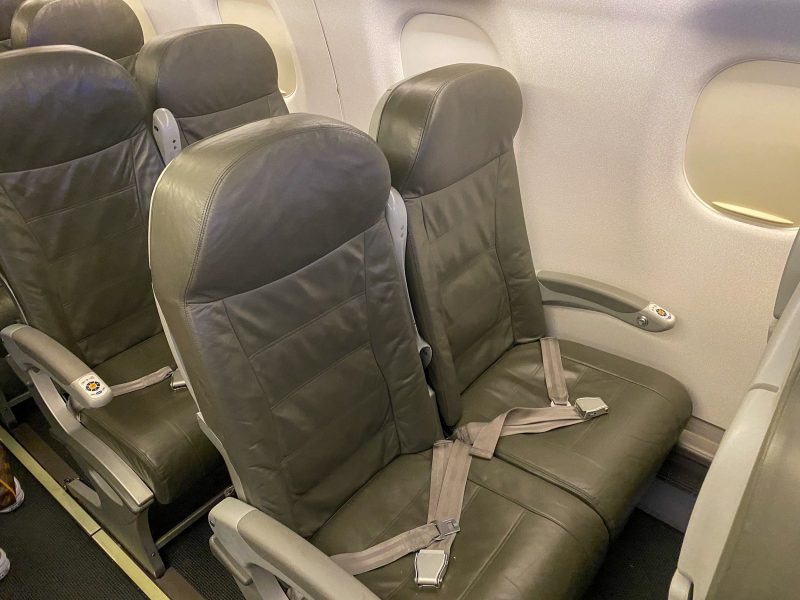
All the windows were closed on the plane to keep it cool so I immediately opened up mine to get some sunlight on the seat.

The seat area was incredibly clean and I wasn't concerned with safety in that regard.
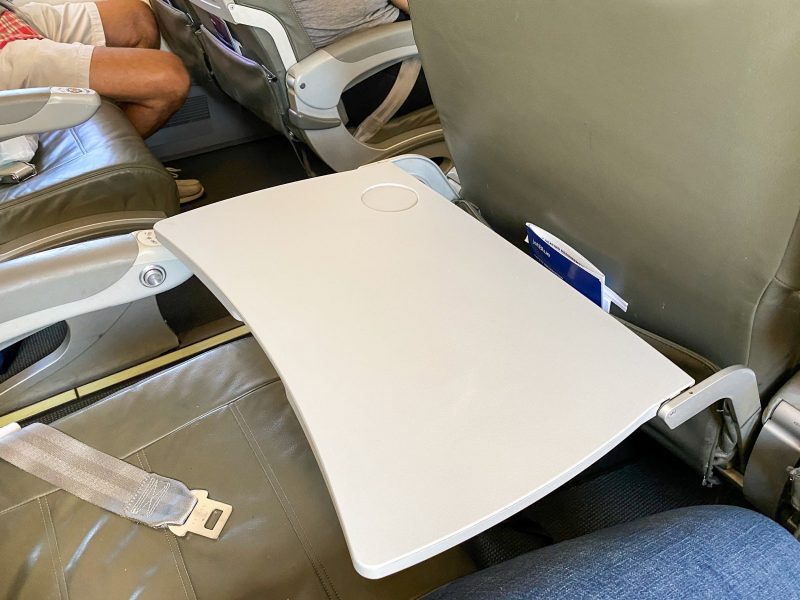
Face coverings are required on JetBlue and aircraft are disinfected via fogging.
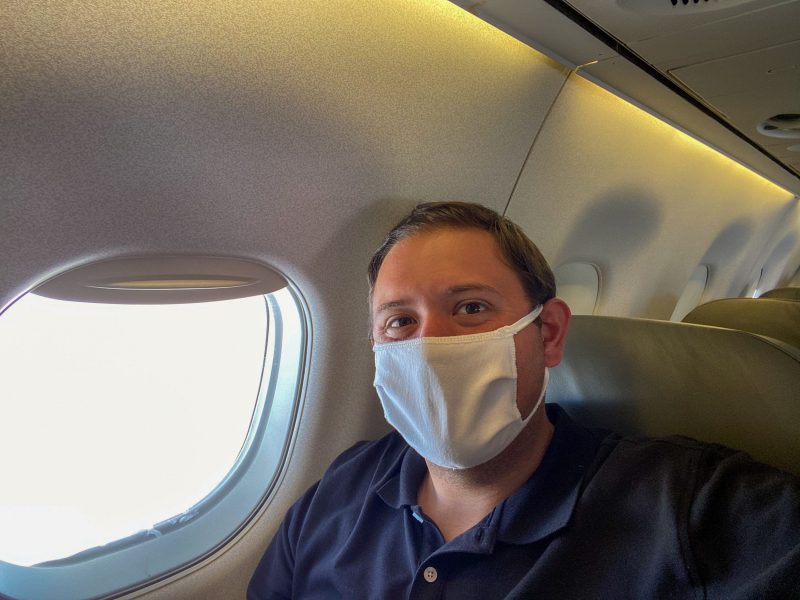
With the aisle seat blocked and JetBlue offering 32 inches of legroom, it felt like I had all the room in the world to stretch out.
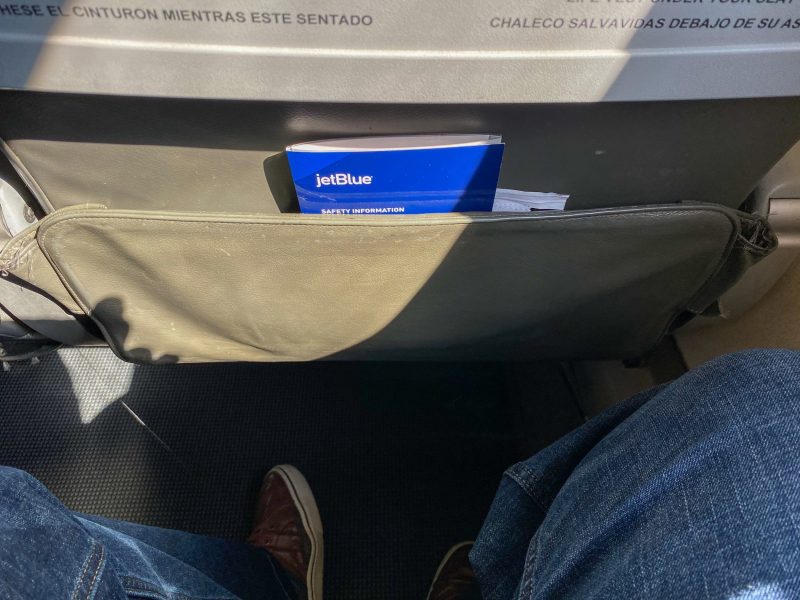
The audio was not working on the in-flight entertainment – which frequently happens with JetBlue's old systems, in my experience – but the home screen did have reminders about the airline's new health and safety policies.
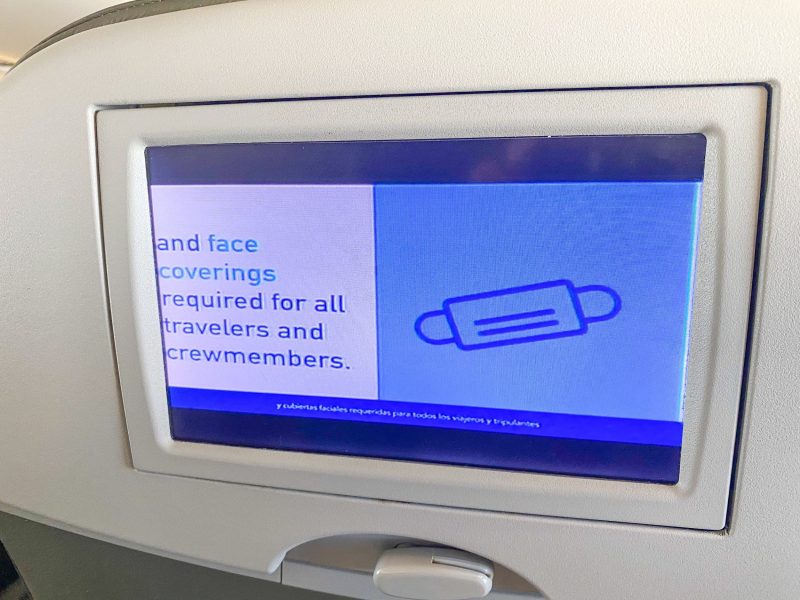
It was a welcome sight and would've been similarly welcomed in the gate area, as well.
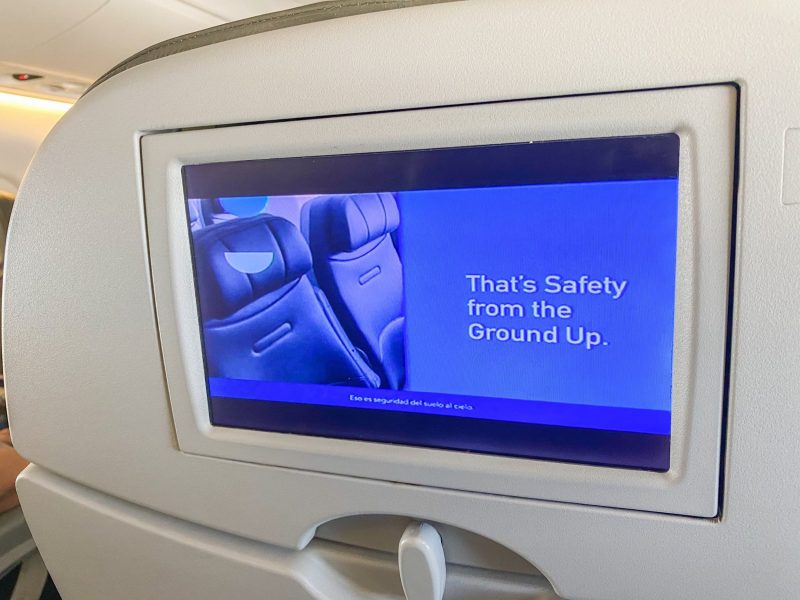
And the air vent on the E190 is closer than those on larger jets, which was great as experts say the air from vents can provide a cone of protection using filtered air.
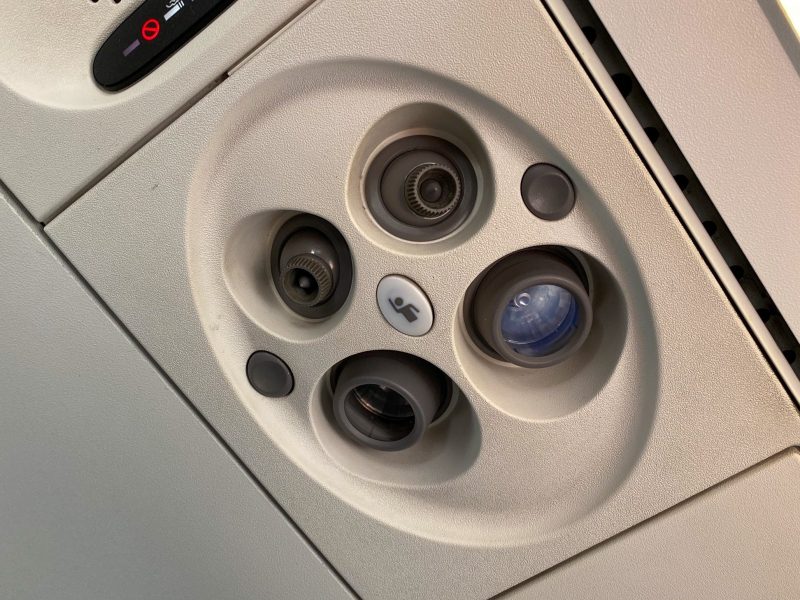
With a light load of passengers, we departed on-time and quickly taxied to the nearby runway with no other planes ahead of us.
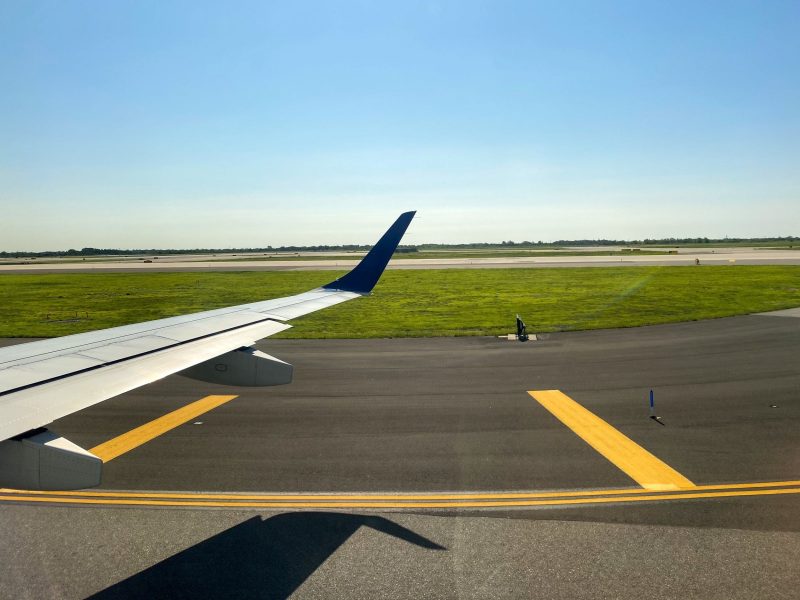
As we settled into our flight to Chicago, the in-flight service began.
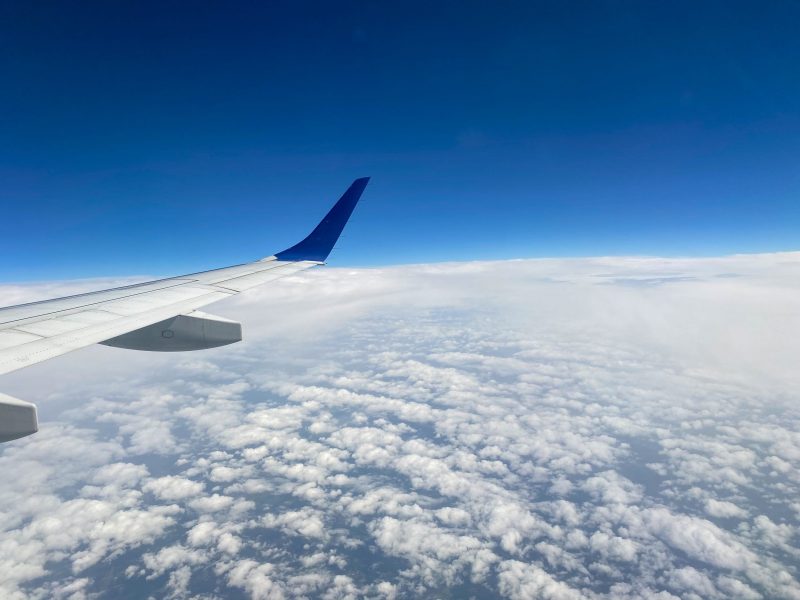
One flight attendant distributed sealed plastic bags with a drink, snacks, and napkins.
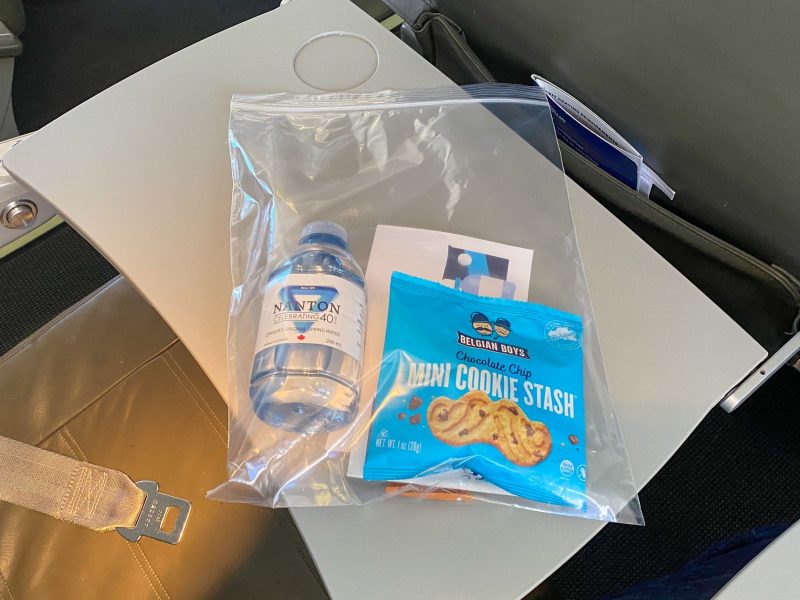
I was genuinely surprised that we were given anything since longer flights I'd taken on American and United yielded no service whatsoever.

I tried to settle in for the rest of the flight using either the in-flight entertainment or complimentary WiFi but both were on the fritz.
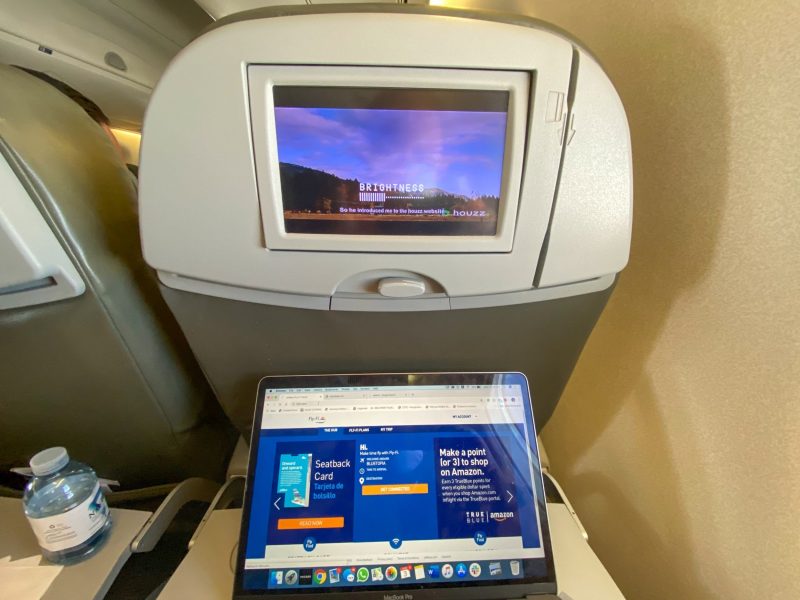
Other than that, it was smooth sailing to the Windy City.
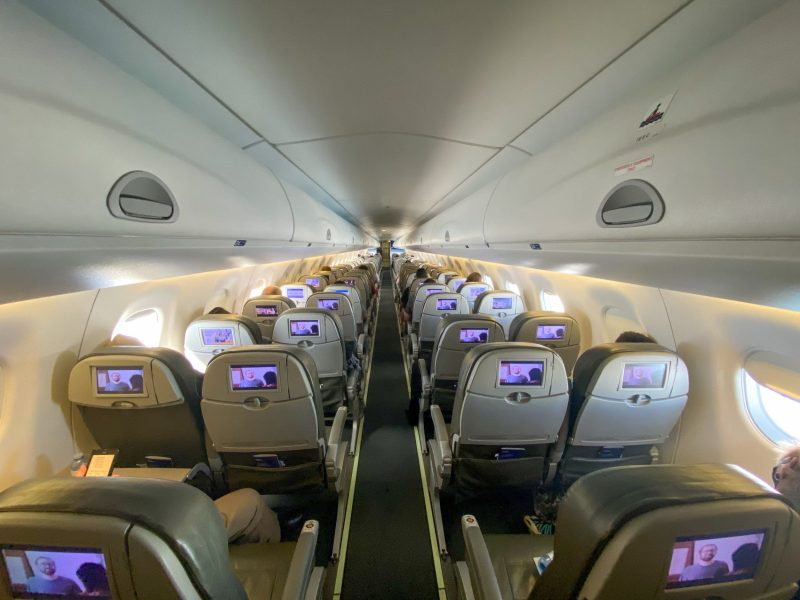
We landed in Chicago slightly early and I never thought I'd ever see the airport so empty.

There was not another plane in sight on our side of the concourse, normally used by American Airlines.
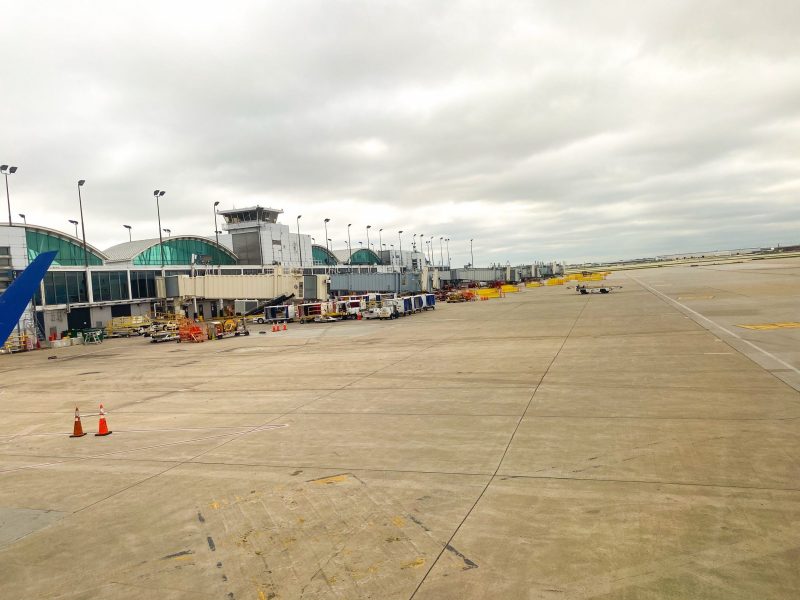
Flight attendants asked passengers to stay seated during deplaning until it was time for their row to go and most complied.
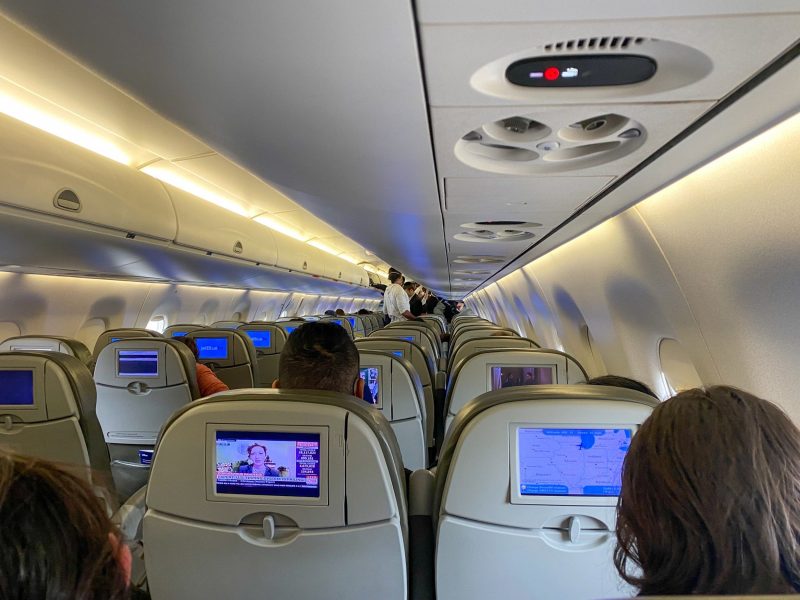
A light cleaning of the plane had begun as we walked off, with the next flight taking the plane straight back to New York.
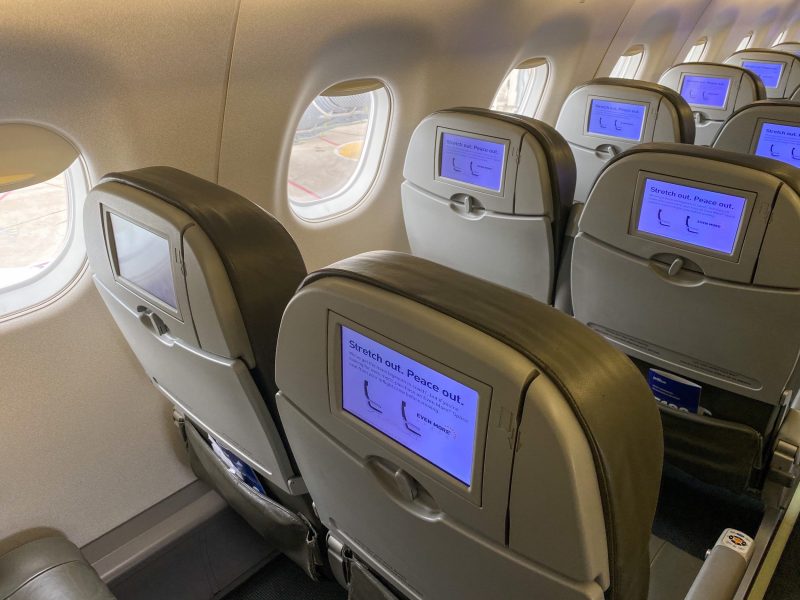
In the jetway, I saw another surprising sight. JetBlue had bothered to install placards in its outstation airport, a rarity during my travels as smaller airports tend to get neglected in this area.
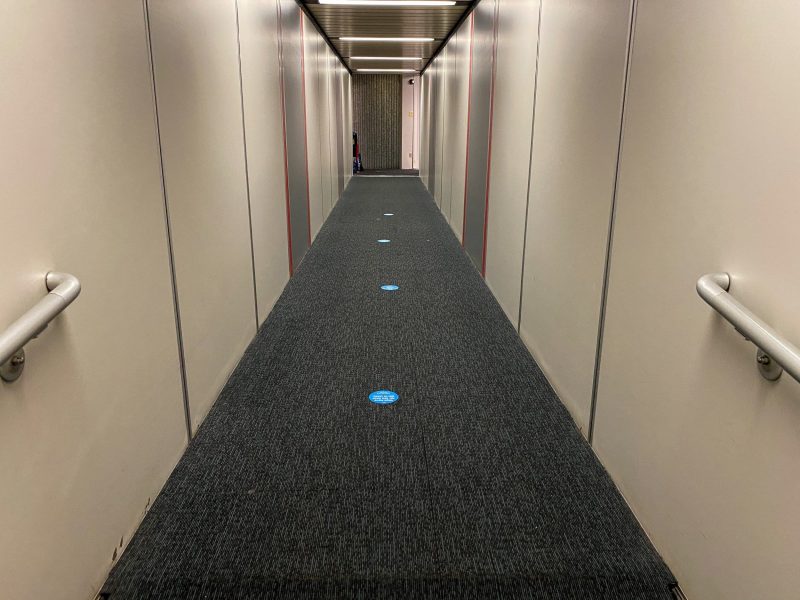
Though JetBlue is a mid-tier airline, the onboard experience ranked higher than some of the largest airlines in the country in my book. The problem was getting to the plane, especially having to deal with a last-minute flight cancellation coupled with a chaotic pre-security terminal experience.
JetBlue's standard modus operandi is to fly two daily round-trip flights between hubs and outstations, typically one in the morning and another in the evening. But the reduced demand is forcing JetBlue to only fly one round-trip on poor-performing routes and not even daily, in some cases, leaving unpredictability when it comes to scheduling.
Once on the plane, however, the experience was perfect, complete with blocked seats and an in-flight service to boot. I wouldn't hesitate to fly JetBlue again but would avoid them for day trips since the flight cancellation left me scrambling for a same-day return that ultimately forced me to move up my trip by an entire day.

